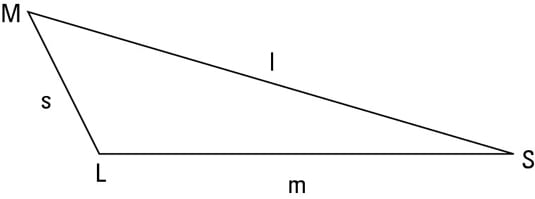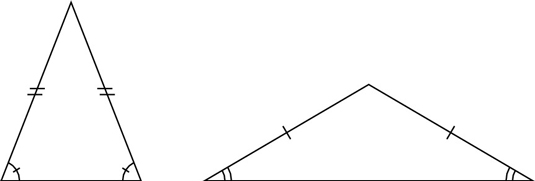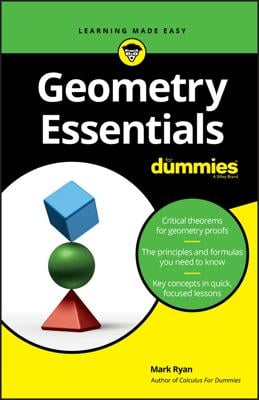The following are triangle classifications based on sides:
-
Scalene triangle: A triangle with no congruent sides
-
Isosceles triangle: A triangle with at least two congruent sides
-
Equilateral triangle: A triangle with three congruent sides
(For the three types of triangles based on the measure of their angles, see the article, “Identifying Triangles by Their Angles.”)
Identifying scalene triangles

In addition to having three unequal sides, scalene triangles have three unequal angles. The shortest side is across from the smallest angle, the medium side is across from the medium angle, and — surprise, surprise — the longest side is across from the largest angle. The above figure shows an example of a scalene triangle.
The ratio of sides doesn’t equal the ratio of angles. Don’t assume that if one side of a triangle is, say, twice as long as another side that the angles opposite those sides are also in a 2 : 1 ratio. The ratio of the sides may be close to the ratio of the angles, but these ratios are never exactly equal (except when the sides are equal).
If you’re trying to figure out something about triangles — such as whether an angle bisector also bisects (cuts in half) the opposite side — you can sketch a triangle and see whether it looks true. But the triangle you sketch should be a non-right-angle, scalene triangle (as opposed to an isosceles, equilateral, or right triangle). This is because scalene triangles, by definition, lack special properties such as congruent sides or right angles.If you sketch, say, an isosceles triangle instead, any conclusion you reach may be true only for triangles of this special type. In general, in any area of mathematics, when you want to investigate some idea, you shouldn’t make things more special than they have to be.
Identifying isosceles triangles

An isosceles triangle has two equal sides (or three, technically) and two equal angles (or three, technically). The equal sides are called legs, and the third side is the base. The two angles touching the base (which are congruent, or equal) are called base angles. The angle between the two legs is called the vertex angle. The above figure shows two isosceles triangles.

